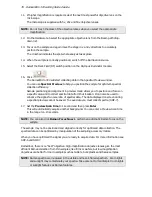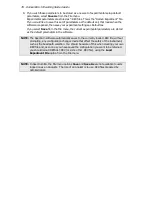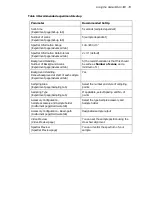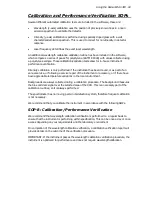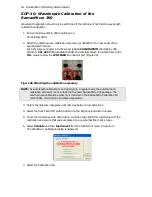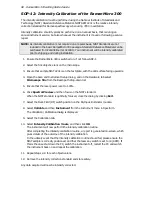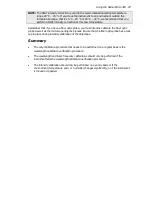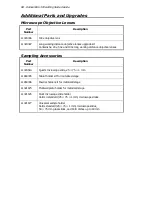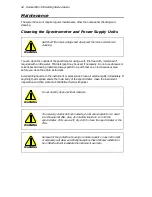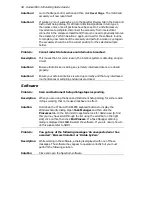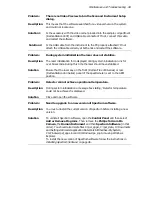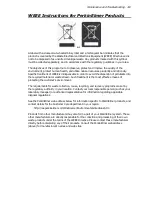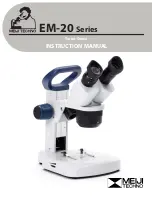
Using the RamanMicro 300 . 87
NOTE: The NIST intensity correction is valid in the recommended operating temperature
range 20
°
C – 25
°
C. If you move the instrument to an environment outside this
temperature range, that is 15
°
C – 20
°
C or 25
°
C – 30
°
C, we recommend that you
perform a NIST intensity correction at this new temperature.
Remember that if you have a fiber optic probe, you must intensity calibrate the fiber optic
probe as well as the microscope objective lenses. Ensure that the fiber optic probe has a lens
cap in place during intensity calibration of the objectives.
Summary
•
The only calibration procedure that needs to be performed on a regular basis is the
wavelength calibration verification procedure.
•
The wavelength and laser frequency calibrations should only be performed if the
instrument fails the wavelength calibration verification procedure.
•
The intensity calibration should only be performed on a yearly basis or if the
environment (temperature and / or humidity) changes significantly, or if the instrument
is moved or repaired.
Summary of Contents for RamanMicro 300 Series
Page 1: ...RamanMicro 300 Series Getting Started Guide MOLECULAR SPECTROSCOPY...
Page 5: ...Introduction...
Page 10: ...10 RamanMicro 300 Getting Started Guide...
Page 11: ...Safety Practices...
Page 21: ...Raman History Theory and Instrumentation...
Page 29: ...Preparing Your Facility...
Page 35: ...Installing Your RamanMicro 300...
Page 68: ...68 RamanMicro 300 Getting Started Guide...
Page 69: ...Using the RamanMicro 300...
Page 90: ...90 RamanMicro 300 Getting Started Guide...




